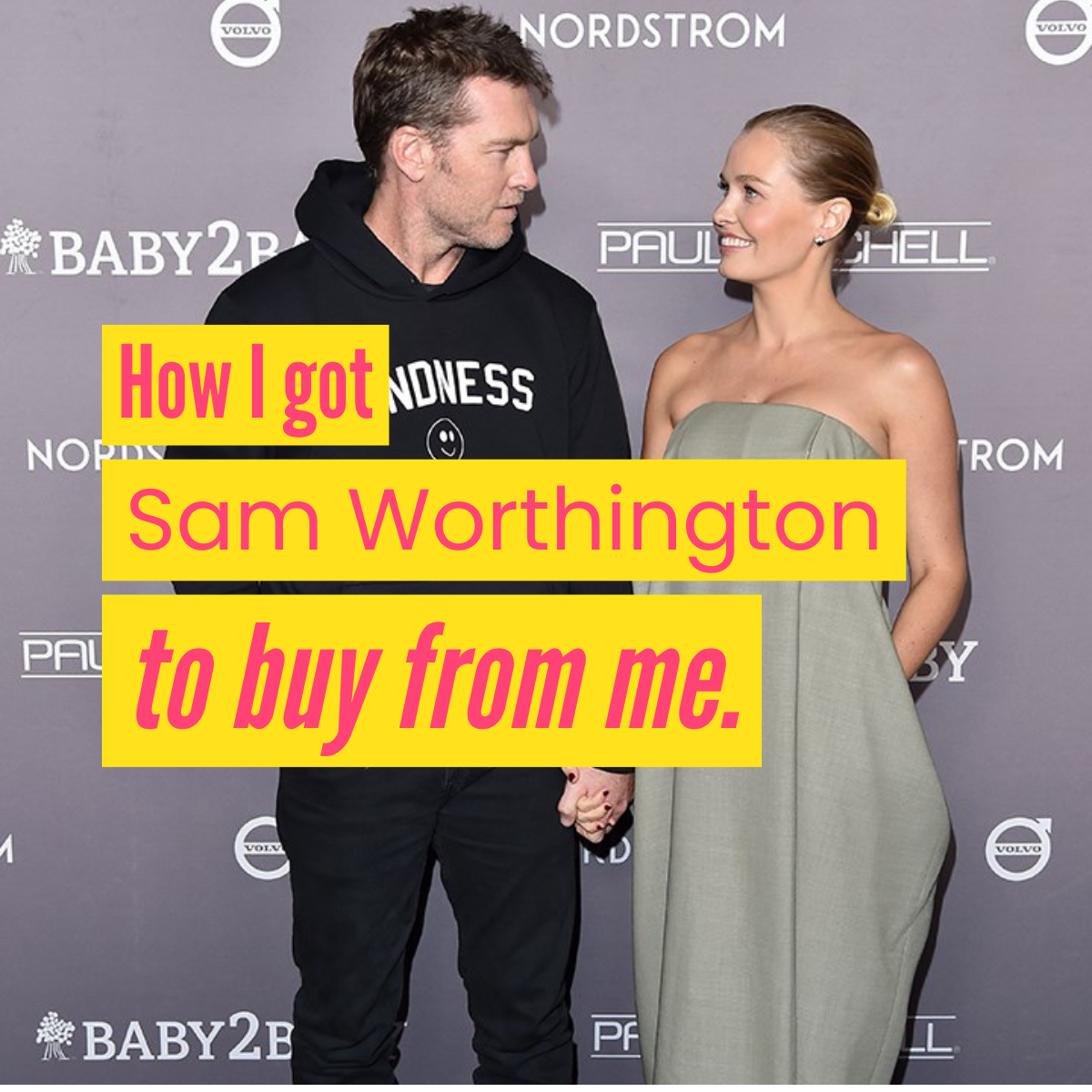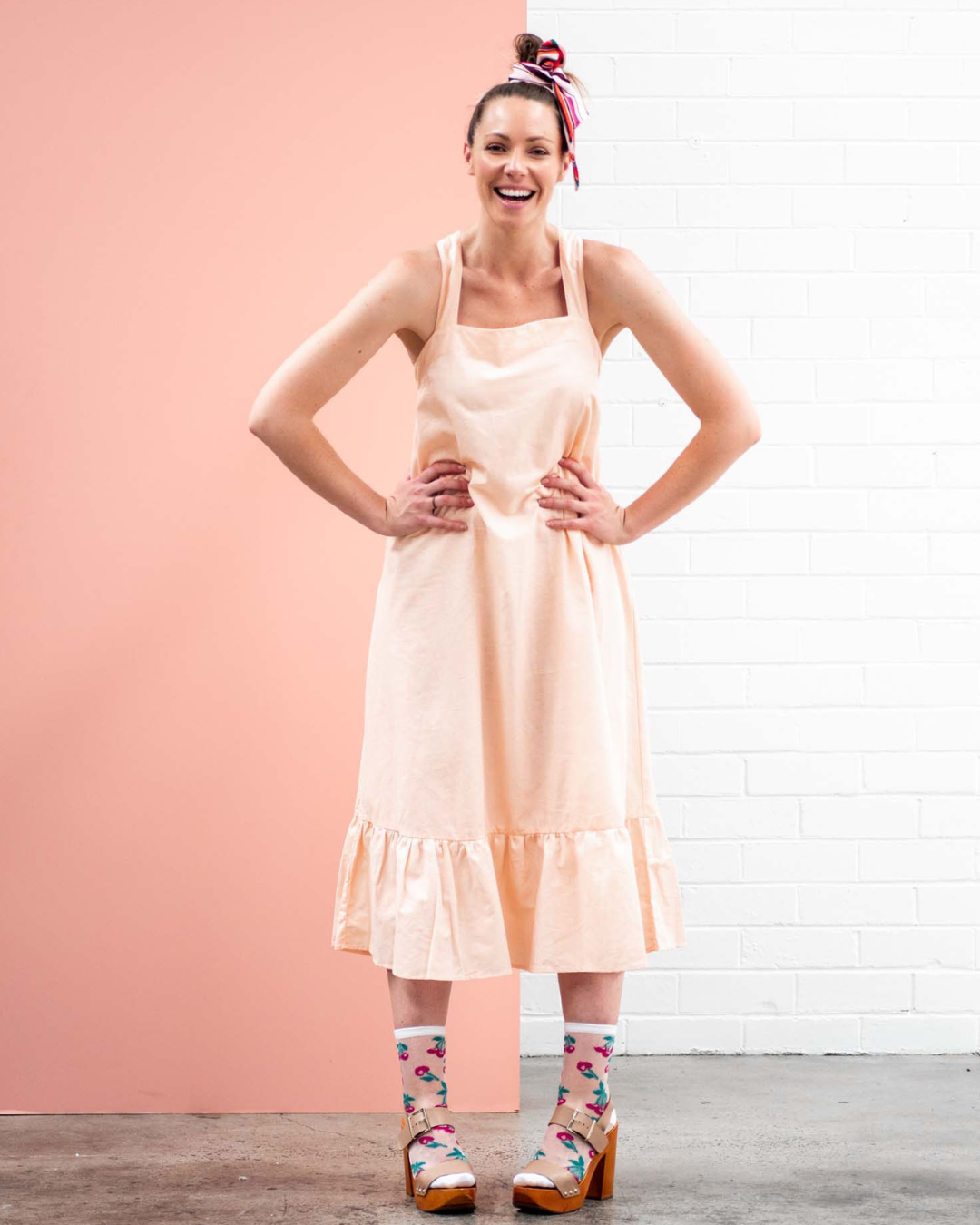One of the most common questions I get asked is, ‘How do I know if a garment is ethical or sustainable?’ and I get it. We’re bombarded by information all day long on social media, the radio, magazines, on TV, through street advertising… Sometimes it’s difficult to decipher it all and make the right decision when it comes to buying. Understanding ethical and sustainable fashion can be complicated - but it doesn’t have to be. It’s just about taking the time to stop and think before you buy.
I spoke to the students at Edithvale Primary School this morning about ethics and sustainability in fashion, so I had to come up with a theory that twelve-year-olds would remember and understand. I was forced to explain a complex problem with a simple method, and I may have been speaking to primary school kids, but it's a method that everyone should shop by.
I’ve coined it, ‘The Three M’s’, and it’s a theory that can help you navigate any confusion you might have about the piety of a piece of clothing.
Start with where a garment is MADE. It's a legal requirement in Australia to label garments with washing instructions, safety or hazard instructions, and also the country of origin. If it's missing these details, you'll need to ask the retailer, 'Who made my clothes?'. If it’s made in Australia, it’s a great start, but it doesn't always mean safe conditions and ethical wages. Unfortunately, slave labour in the Australian manufacturing industry still exists, which is why a little research always helps. Brands who are proud of their ethical working conditions - talk about them. You can learn a lot about a brand from their Instagram profile and their 'about' page; they might be an Australian brand but if they're not using the words 'ethical' or 'sustainable', you'll need to dig deeper yourself.
If your garment is made in India or China, chances it’s been made by someone who’s not paid a living wage, working in unsafe conditions, and they probably don't get overtime or paid parental leave. It’s a blanket statement because there are a select few labels who work closely with small communities in third world countries to build ethical supply chains, but this is a rarity. The brands who do this, are transparent and open about it, so if you're struggling to find more information on their website about their values or manufacturing processes, it's generally because they're not proud of them. The International Labour Organisation estimates that 170 million children are engaged in slave labour making textiles and garments to satisfy the demand of the fast fashion industry; when it comes to a garment’s country of origin, it’s simple – buy locally made where possible.
The second factor to consider is what MATERIALS have been used, and it’s also a legal requirement to have this listed on the clothing tag. The fabric composition of a garment will tell you how much of an environmental impact it has had during the production phase, how much of an impact it will have while it’s being worn and washed, and what kind of an impact it will have when you decide to get rid of it. Natural and renewal fibres like linen, hemp, silk, bamboo, wool and cotton are much more environmentally-friendly than their counterpart synthetic fibres like lycra, polyester and nylon, which are made from non-renewable resources and petrochemicals. Polyester requires more than double the energy of conventional cotton to produce, and toxic chemicals and carcinogens are used which leak into the waterways and dissipate into the air during production causing significant environmental damage. When synthetic fabrics eventually decompose in landfill, they leak their nasty chemicals straight into the soil and into waterways. If you're going to shop, shop sustainably, and avoid synthetic fibres. Natural is always better.
It's also important to consider the cost of a garment. How MUCH you’re paying for something will often reflect the conditions in which it has been made. Let’s use a cotton t-shirt as an example and start from the beginning of its lifecycle; cotton has to be farmed, harvested, de-seeded, carded, spun and then woven into fabric, and the fabric then needs to be dyed, treated, cut and rolled, all which is a costly and labour-intense process. Numerous people have already been involved - and have wages to be paid - before cotton fibres are even made into a roll of fabric. A designer then spends hours working on the t-shirt’s fit, construction, details and colours, before moving into the production phase where a pattern needs to be made for a sample garment. The sample then needs to be fitted and re-made before a final garment is approved for manufacturing. The t-shirt then moves into the distribution phase, and if it has been made in India, it needs to be imported to Australia, so non-renewable fossil fuels are used in transportation and carbon emissions are generated. Plastic and excess packaging are also used to meet Australia's strict customs requirements, and every person who has touched it thus far has a wage to be paid. When it finally makes it into a retail store or online, this t-shirt has to be merchandised by staff who have wages to be paid, and the store probably has a rental lease to cover. Then there’s the cost of labelling, swing tags, store bags and the rest. If you’re standing in a store and thinking about buying a $10 t-shirt - don’t do it.
When you consider every single step of the garment lifecycle that occurs even before you buy it, and all the wages, the time, the materials, the costs, the humans, everything – it is not possible that a $10 t-shirt has been made in an ethical environment. The people who have slaved to make this t-shirt most certainly haven't been paid a fair living wage.
‘The Three M’s’ are easy to understand and remember, and when you stop to think about it, it all makes sense. Where a garment is MADE, what MATERIALS it's made from and how MUCH it costs, will answer most questions you have about ethics and sustainability. This is by no means a definitive or in-depth solution to working out what 'good fashion is', but it's a great start, and we all have to start somewhere.
Every garment counts. Buy less, choose well, shop local.
The Fashion Advocate x

Originally posted October 19 2017.



